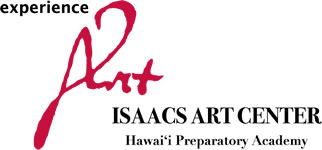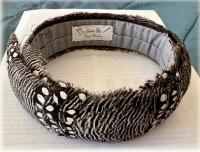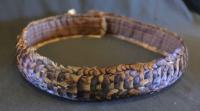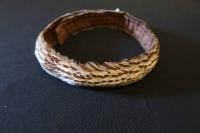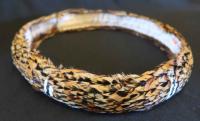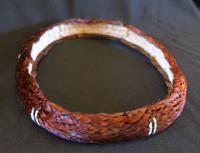Tsuji Kimura Kaiama (1914-1998)
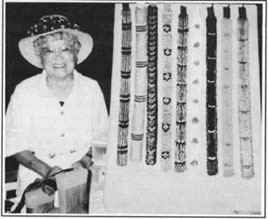
Born March 15, 1914 as the sixth of eight children of the late Masajiro and Hisamu Kimura, Tsugi and her brothers and sisters have warm memories of growing up in a very different Waimea. "We had no electricity. Parker Ranch would lend us a wagon on weekends and my dad and brothers would go up to Mana to gather a load of mamane wood to saw and chop and stack for heating, cooking, bathing and washing our clothes. We ironed with charcoal. Mom wove our blankets from raw wool from Humu'ula. It was hard work but we still had time to go camping, hunting and gathering delicious wild mushrooms."
It's not surprising Tsugi took to feather work. She had watched her mom's meticulous craftsmanship as a seamstress supplementing the income for their large family of eight children. At night, her mom often knitted and Tsugi followed suit. "By the time I was eleven, I had knitted my own sweater with inside pockets."
I was young, just out of Hilo High School and fortunate to have found a job, but Hilo's humidity made me ill. I returned home to Waimea to recuperate and Yutaka suggested I try making feather hat lei. He was already working for Parker Ranch and he loved to wear a hat and was intrigued by feather lei. He asked a co-worker's mom, Mrs. George (Amabel) Freeland, a pure Hawaiian from Maui, to show him how.
Many of Tsugi's lei sport unique diagonal designs. "This is extremely difficult so it's seldom done. Tsugi's designs are as extraordinary as her precision stitchery," says Marie McDonald. Also noteworthy about Tsugi's style: her immaculate stitches on the back are covered over by a flap of fabric to protect the stitches from wear and tear. This is not the customary finish on feather hat lei, but it was one taught to Tsugi by her brother, Yutaka -- the famous Waimea paniolo.
Lei hulu papa isn't an ancient Hawaiian craft. Rather, it's an adaptation of the feather lei worn exclusively by ali'i of old Hawai'i. With the introduction of hats, it was a natural progression. Also introduced were the pheasants brought to Hawai'i to provide sport for hunting enthusiasts. They flourished, especially on the rich lands of Parker Ranch.
